I tried a subscription service for sake—here’s what happened
Getting tipsy with Tippsy Sake
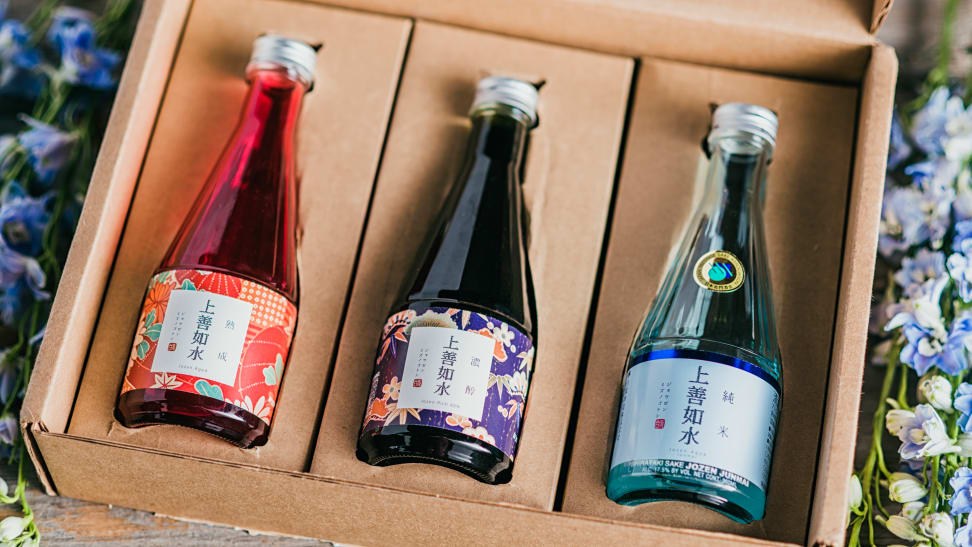 Credit:
Reviewed / Jackson Ruckar
Credit:
Reviewed / Jackson Ruckar
Products are chosen independently by our editors. Purchases made through our links may earn us a commission.
Like meal kits, razors, and even shampoo, alcohol is now perfectly tailored to individual interests—and available on demand. The explosive popularity of craft beers, artisanal cocktails, and organic wines has dovetailed with the rise of subscription services, making the experience of drinking at home more luxurious than ever.
But there are still new frontiers to be explored in the world of subscription alcohol. One such frontier for the western palate is the world of sake. For Japanese people, the term "sake" can refer to any type of wine. But here in America, sake refers to a particular alcoholic rice-based drink, traditionally known as nihonshu in Japan, which is seeing a global renaissance.
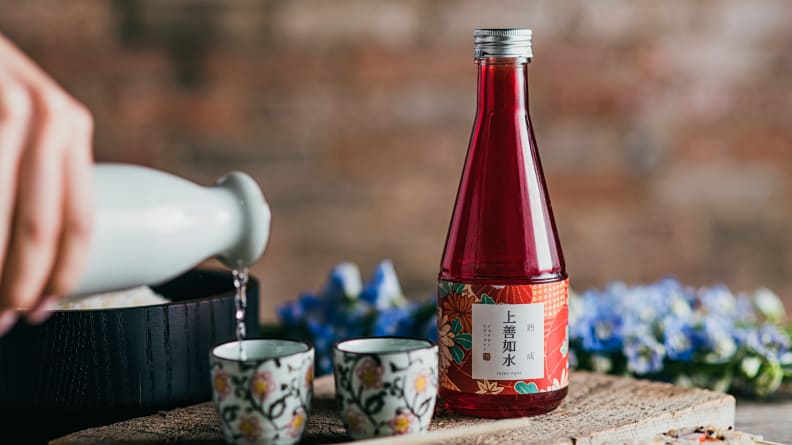
Sake's diverse flavor profile makes it a year-long drink for all sorts of food pairings.
Though most often served with sushi in the U.S., the increasing variety of sake available on the American market makes for a versatile drink which can be paired with all sorts of foods, including pizza and chocolate. Sake is a year-round beverage, as you can drink it either warm or chilled for different purposes, but I personally prefer room-temperature unless otherwise specified.
My immense interest in sake began after I awkwardly sat through a 12-course omakase meal with sake pairing in Japan, without any knowledge of the beverage. The food was superb, but I was really confused by the tasting notes that our sommelier tirelessly articulated. After a few years of working in the food industry, I started to appreciate the taste and be able to differentiate a good sake from an average bottle.
But now that I actually care about sake, I struggle with the limited choices I have at most liquor stores, which rarely have bottles from a variety of regions. Enter Tippsy Sake, a subscription service that offers sake delivered to your doorstep every month.
What is Tippsy Sake?
Tippsy Sake is an online marketplace that connects American consumers with both well-known and boutique Japanese sake breweries. The store features a decent selection of high-quality sake, as well as a monthly sake subscription service that aims to introduce sake to a wider audience. For $59 a month, subscribers can enjoy three 10-ounce bottles of sake, fresh from Japan.
There’s no customization in the subscription boxes at the moment, but subscribers are told what’s in their box before shipment. If they don’t like the bottles of the month, they can skip a box or cancel the subscription up to three days before the shipping date.
How does the subscription box work?
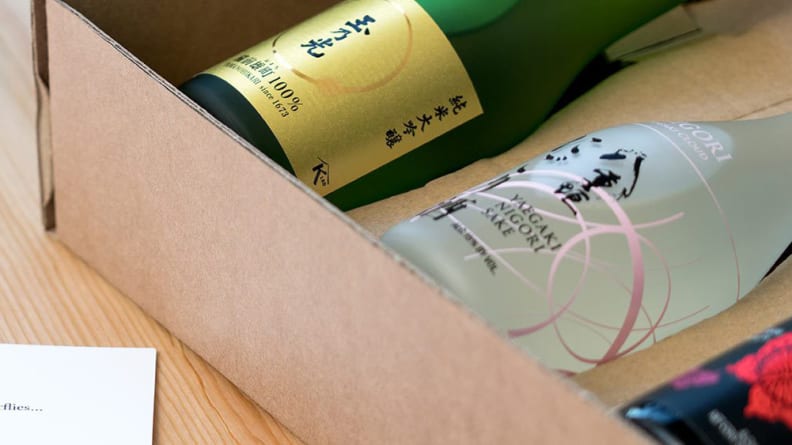
A subscription includes three bottles of 10-ounce sake per month.
A subscription to Tippsy sake costs $59 per monthly box, or $49 per box when you purchase a full year’s subscription. You can start a year-long subscription whenever you want. Each box comes with three bottles of sake, chosen by the company’s experts, with cards describing the flavor profiles of each bottle.
This is a pretty affordable way to learn about sake, as you'd typically pay between $20 and $30 for an average bottle at a liquor store, and anywhere from $80 to hundreds of dollars for a high-grade bottle. Each Tippsy box I've received so far contains at least two high-grade bottles, which are priced at least $35 per piece at the store—meaning the total box is worth more than what I paid for it. Tippsy also allows beginners to try 10-ounce sample sizes of some high-grade bottles that you typically wouldn't find in stores.
Four types of subscriptions are available: one month, three-month, six-month, and a year. Subscribers can manage their plans and schedule to skip delivery on the customer portal. To cancel the subscription, simply login to the account and hit “cancel” under the action section. It also allows subscribers to re-activate anytime.
To sign up, you’ll need to register on the website, choose the type of subscription, and pick your delivery intervals (you have the option to have a three-month subscription spaced out over a delivery period of five months, for example).
Typically, the shipment leaves its warehouse in the first week of the month, but the arrival date can vary, mainly because of regulations and ground transportation. However, I found that Tippsy was reliable and communicative—they sent an email to confirm my shipment and a second one for tracking number, which allowed me to plan ahead and make sure I was home to sign for the package.
All sake packages require someone 21 or older to sign upon delivery. Because of state regulations, Tippsy currently doesn’t ship to Alaska, Arkansas, Hawaii, Kentucky, Mississippi, and Utah, according to its website. It usually takes 7 to 14 business days for the package to arrive. Tippsy also recommends having the boxes delivered to business addresses or local FedEx locations so there’s always someone there to sign for the package.
What is sake?
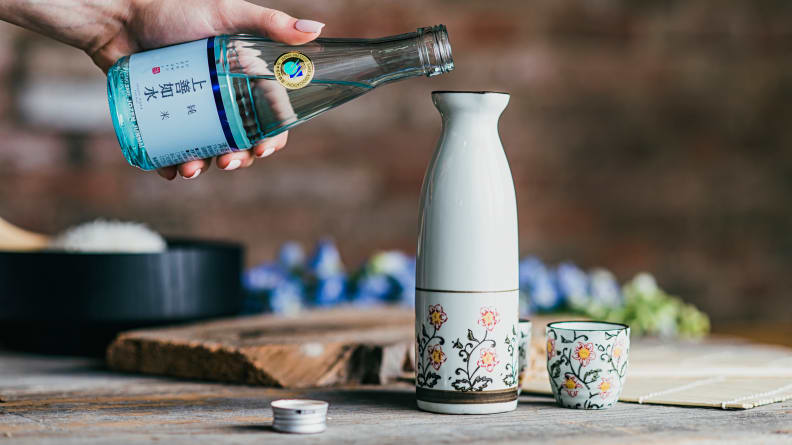
Sake, the national drink of Japan, is enjoying a renaissance.
Sake, pronounced sah-keh, is a Japanese alcoholic beverage made from fermented rice. It’s not a strong drink, as the average alcohol content is similar to that of red wine. The ingredients are simple: rice, water, yeast, and kōji, which is a fungus that activates and transforms starch into sugar. Kōji can also be found in fermented soy sauce and miso paste.
You might be wondering, with only four ingredients, how does one sake differ from the other? The answer lies in the water, the rice polishing ratio, and the origin of the yeast.
The water: Japan is a mineral-rich country and different regions contain different types of minerals in their water, which makes the spring water from different locations unique, even a few miles apart.
The yeast: Similar to their water, Japan’s many regional yeasts give different sake distinctive aromas and flavor profiles. It’s becoming increasingly popular for brewmasters to develop their own yeast for sake brewing.
The rice: The rice polishing ratio (or RPR, the abbreviated form that often appears on labels) plays a key role in the finished product’s flavor. Simply put, the rice polishing ratio indicates how much of each grain of rice remains in the brewing process after a portion of the grain has been polished away. For example, sake with “70% RPR” means that 30 percent of each grain of rice’s outer layer has been milled away.
Why does it matter? As pictured below, the core of the rice grain is starch while the outer layer is full of protein and fat. To ensure purity in the taste and effective conversion from starch to sugar, brewers like to remove the protein and fat. Lower rice polishing ratio means the final product tastes cleaner and sometimes fruitier, in comparison to a high rice polishing ratio that gives the sake richer taste and more body.
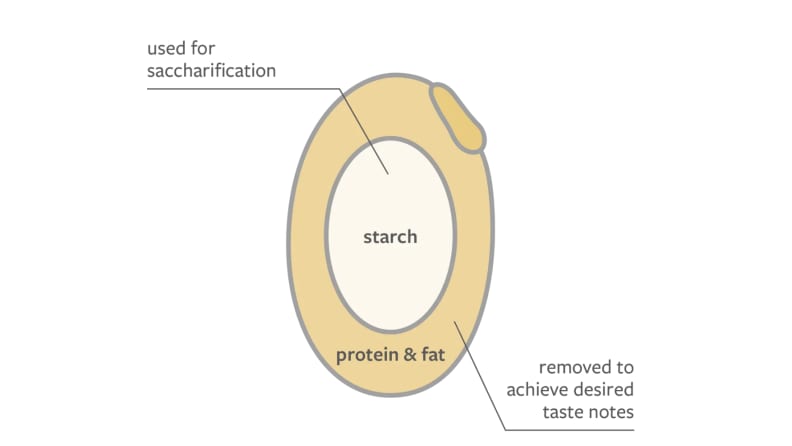
The core of the rice grain is starch, while the outer layer is full of protein and fat.
The rice polishing ratio also dictates—to an extent—the grade of the sake. The three main categories are junmai (70% or less RPR), ginjo (60% or less RPR), and daiginjo (50% or less RPR). Although junmai is typically cheaper than daiginjo, it doesn’t mean all junmai is inferior to its low rice-polishing ratio cousin. The market price fluctuation is mostly caused by the supply, as daiginjo comes in small batches and relies on traditional methods, as opposed to machines.
I subscribed to Tippsy Sake—here’s what happened
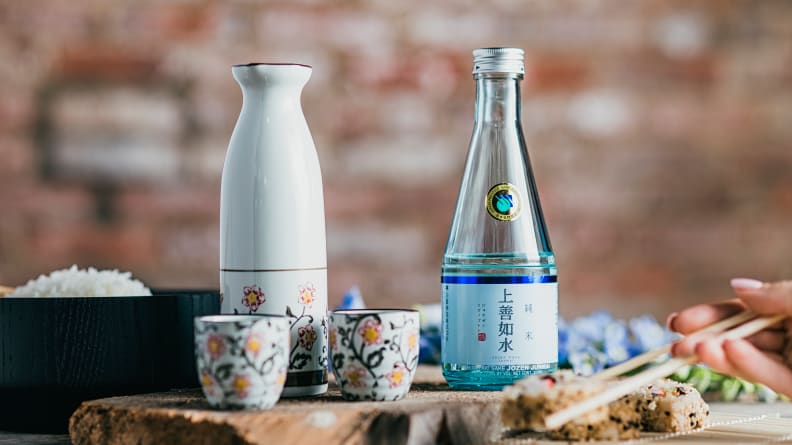
A three-month subscription is great for beginners looking to learn about sake.
Excited about finally getting to try out Japanese sake that’s rare in the U.S. market, I signed up for the three-month sake subscription. The bottles arrived securely packed in their box, and even remained intact even after I carelessly dropped the box on cement. The cardboard packaging was minimal, with no environmentally-unfriendly bubble wrap.
Each gorgeous bottle of sake in my package came with a card that explained the history of the brew, as well as tasting notes, recommended serving temperature, and suggested food pairing. I was pleased to find Tippsy displays each sake’s taste metrics (rich and dry, rich and sweet, sweet and light, and light and dry) in a diagram, which makes them easy to read.
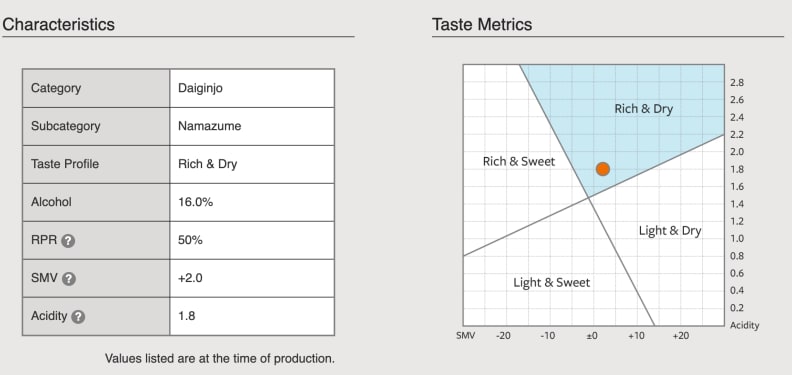
Each bottle comes with tasting information on a card.

Tippsy also gives you suggestions about serving temperatures and food pairings.
In my first order, I received three bottles, all from Jozen brewery but brewed in different prefectures of the country. There were two junmai and one ginjo. The sake was drinkable, but my fiancé and I took issue with the tasting notes for the ginjo, which supposedly was the highest quality sake in the batch (or at least was at the highest price point).
After a few sips, we reached a consensus that neither of us could taste the “melon, apple, and peach” notes in the Jozen “Aqua.” We also noticed that the RPR was odd—the rice polishing ratio has to be 60% or less to be “ginjo,” but this sake label suggested it was 70% RPR (Tippsy hasn’t responded to our inquiry about this). Ultimately, I was disappointed by this introduction box—but was pleased to find that better bottles came in later boxes.
Our second box was a major improvement. The selection contained a good mix of daiginjo, junmai, and junmai genshu, which is an undiluted sake with a creamy texture that delivers notes of banana, lychee, and pear. The daiginjo from Kurosawa brewery had notes of Asian pear that I thought was timely for the September weather. On the whole, as compared to the first box, the sakes in this second box offered significantly less harsh, more rich and complex flavors which loosely resembled the tasting notes provided by Tippsy.
How good was the sake?
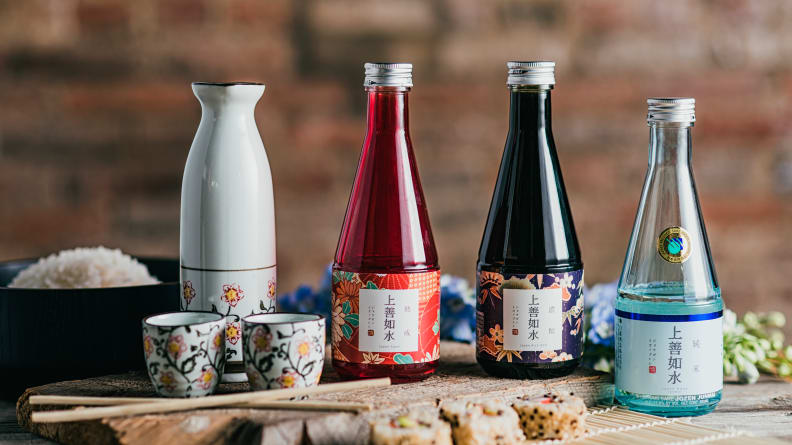
Known for its consumer-direct approach, Tippsy delivers fresh sake from Japan.
While Tippy’s sakes weren’t the best I’ve ever tasted, I’m confident they were worth the money spent. By cutting out the middleman and forging a direct connection with breweries in Japan, Tippsy is able to eliminate the large margins typically charged by distributors and retailers.
Therefore, from a cost perspective, Tippsy is a trustworthy source for ordering high-quality, rare-in-the-market sakes. The website also sells bottles individually, including bottles featured in the subscription box. Additionally, I can attest that lots of well-known brewers are often featured in either their monthly subscription or their online shop, so you can definitely get your hands on some famous daiginjos.
Is a Tippsy Sake subscription worth it?
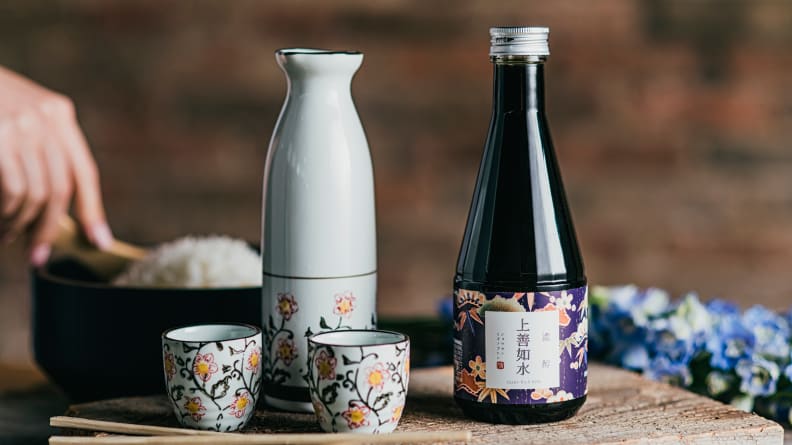
Tippsy offers a great introduction to the world of sake.
If you like to drink and are looking to adventure beyond wine and beer, then a Tippsy Sake subscription is well worth it. The service is particularly well suited for those discovering the world of sake, as Tippsy provides a meticulously curated and diverse set of bottles from different breweries all across Japan. Each bottle comes with an easy to understand card showing where in Japan the bottle was brewed along with recommended serving temperature, food pairings, and tasting notes.
When deciding which length of subscription you should purchase, I would recommend a shorter subscription (such as three months) for true sake novices. This will allow you to discover whether sake is for you without making too long (or expensive) of a commitment. If you enjoy your shorter subscription, or already know that you like sake, a longer subscription will allow you to explore the expansive world of sake in greater depth.
Tippsy Sake may not be perfect, but it provides a comprehensive introduction to the rich world of sake which would be hard to experience any other way, short of flying to Japan. Plus, as the popularity of sushi and izakaya continues to rise in the U.S., having some knowledge of the in-and-outs of sake culture will allow you to impress your friends next time you go out to dinner.


